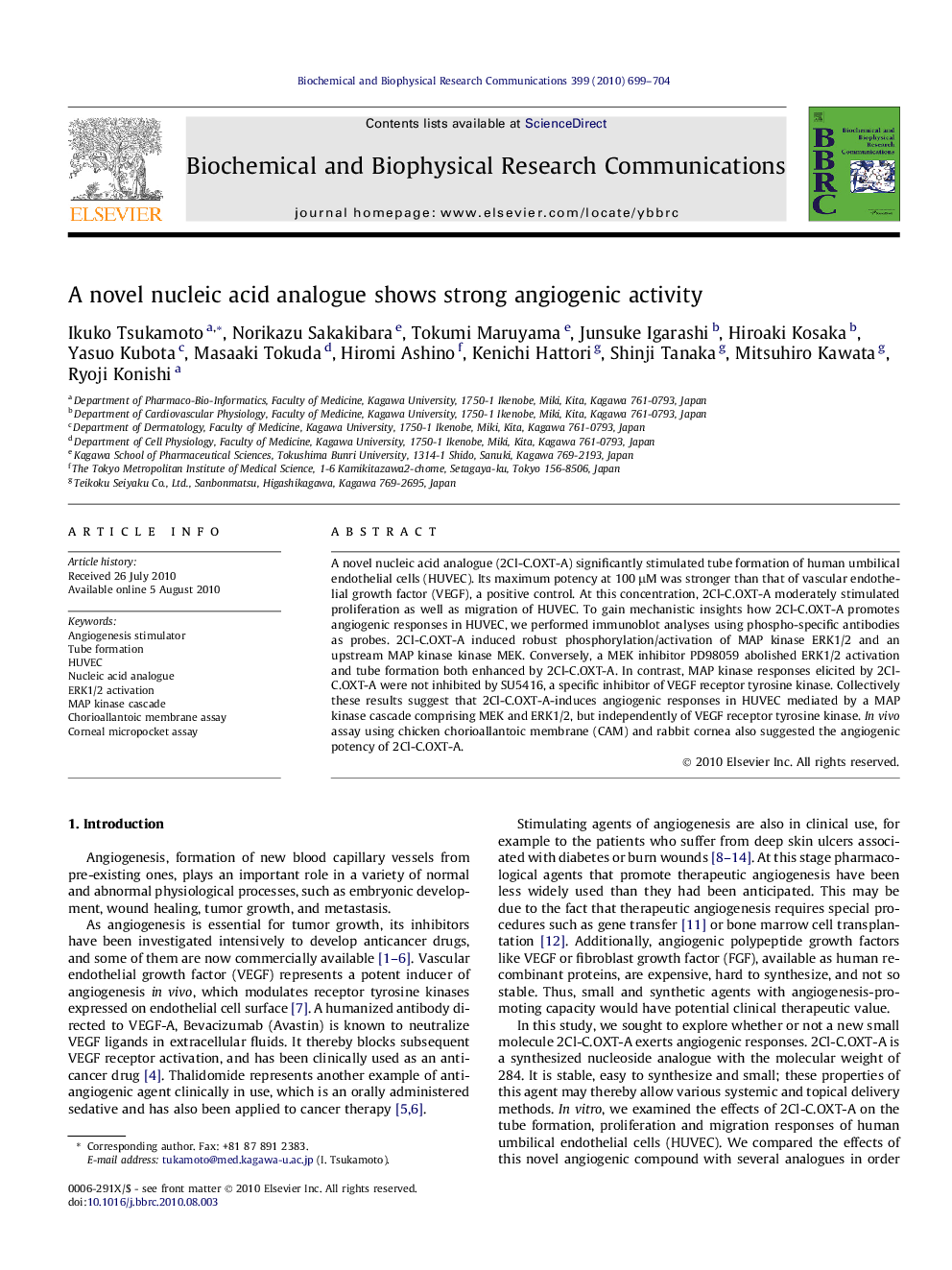| Article ID | Journal | Published Year | Pages | File Type |
|---|---|---|---|---|
| 1931673 | Biochemical and Biophysical Research Communications | 2010 | 6 Pages |
A novel nucleic acid analogue (2Cl-C.OXT-A) significantly stimulated tube formation of human umbilical endothelial cells (HUVEC). Its maximum potency at 100 μM was stronger than that of vascular endothelial growth factor (VEGF), a positive control. At this concentration, 2Cl-C.OXT-A moderately stimulated proliferation as well as migration of HUVEC. To gain mechanistic insights how 2Cl-C.OXT-A promotes angiogenic responses in HUVEC, we performed immunoblot analyses using phospho-specific antibodies as probes. 2Cl-C.OXT-A induced robust phosphorylation/activation of MAP kinase ERK1/2 and an upstream MAP kinase kinase MEK. Conversely, a MEK inhibitor PD98059 abolished ERK1/2 activation and tube formation both enhanced by 2Cl-C.OXT-A. In contrast, MAP kinase responses elicited by 2Cl-C.OXT-A were not inhibited by SU5416, a specific inhibitor of VEGF receptor tyrosine kinase. Collectively these results suggest that 2Cl-C.OXT-A-induces angiogenic responses in HUVEC mediated by a MAP kinase cascade comprising MEK and ERK1/2, but independently of VEGF receptor tyrosine kinase. In vivo assay using chicken chorioallantoic membrane (CAM) and rabbit cornea also suggested the angiogenic potency of 2Cl-C.OXT-A.
Research highlights► A novel nucleic acid analogue (2Cl-C.OXT-A, m.w. 284) showed angiogenic potency. ► It stimulated the tube formation, proliferation and migration of HUVEC in vitro. ► 2Cl-C.OXT-A induced the activation of ERK1/2 and MEK in HUVEC. ► Angiogenic potency in vivo was confirmed in CAM assay and rabbit cornea assay. ► A synthesized small angiogenic agent would have great clinical therapeutic value.
